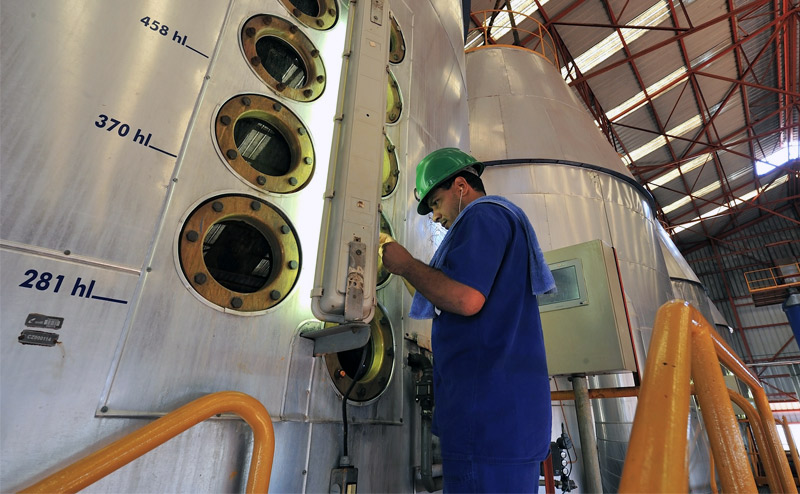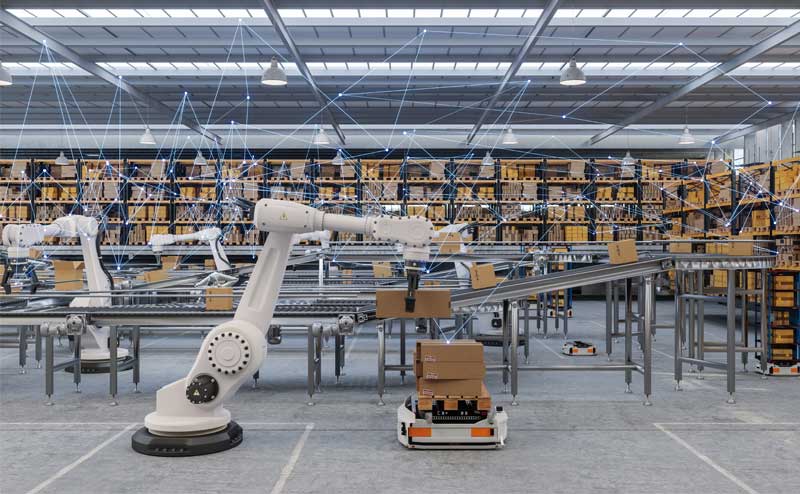The best way to manage outdated equipment
The Fincha Sugar Factory, known as one of the largest and most historic sugar factories in Ethiopia, is yet to resume production after ceasing operations five months ago. This is a prime example of the stark consequences faced when equipment breaks down.
The Fincha Sugar Factory was closed in June 2023 for maintenance purposes. However, it has since been revealed that the factory is still unable to resume production due to the damage sustained to vital equipment.
This catastrophe shows the cruel reality of downtime, along with the impact it can have on workers and the country's economic stability.
Steering away from Ethiopia for a minute, the UK is currently experiencing a significant downturn in manufacturing production. In fact, a very recent report has cited it as the deepest decline since the 2008 financial crisis.
Such decline can be attributed to many things. However, the role industrial equipment plays in productivity should not be overlooked, as according to a survey by Atomik — research on behalf of Shire Leasing — 52% of manufacturing employees said that outdated equipment regularly hindered their work.

This comes as no surprise, as older machinery often lacks advanced automation, which massively slows down production processes, and maintenance becomes more frequent, leading to more downtime for repairs. That's before mentioning the costly repairs or the equipment no longer meeting current safety and quality standards, which increases the risk of errors and defects.
Quite alarmingly, the limitations and potential consequences of old machinery become exacerbated when factored in with the UK's productivity crisis. But this doesn't mean that all old equipment must be ripped out and replaced, even if it has become obsolete.
The UK productivity issue
According to the latest figures from the Office for National Statistics, output per hour worked was just 0.6% above its pre-pandemic 2019 average in the first quarter of 2023.
The UK's productivity has not made significant progress since before the COVID-19 pandemic. Instead, it has been on a relatively weak growth path since the financial crisis, as productivity progress has not been strong enough to match the historical trend that existed for several decades prior to 2008.

In sectors like manufacturing, low productivity reduces competitiveness, increases production costs, reduces exports, slows economic expansion and potentially cuts jobs.
Simply put, the implications ripple through various facets of the economy and can be felt greatly by both businesses and workers alike.
The shining light
Despite the doom and gloom, there is a way this productivity issue can be tackled — and that's through automation. In its simplest form, automation helps to streamline production and increase efficiency.
Without removing human interaction, robotics can assist workers and increase production output by creating a more efficient environment. Here, they can eliminate repetitive tasks and allow workers to upskill while reducing human error in the process by ensuring higher levels of accuracy.
What's more, robotics also provide access to new production methods, including 3D printing and laser cutting, that would otherwise be difficult or impossible for manufacturers to use. Automated machines can also operate around the clock without needing breaks for rest or food, meaning that 'lights out' manufacturing can commence.

In fact, many employees and leaders already view automation as a complementary tool, with Harvard Business Review reporting that more than 90% of recently surveyed workers said automation increased their productivity.
The cost
This leads us to our next question: Do manufacturers buy old or new when looking to upgrade their equipment?
Well, a study by TAVA Technologies suggests that when a manufacturer's machine or tool wears out, “the attractiveness of technological advantage, coupled with uncertainty in the marketplace, makes the decision to buy a new manufacturing asset a crucial one.”
Although this recommends capital investment in a new machine, it does not consider the more costly factors that can arise.
For instance, the associated lead times for commissioning and integrating advanced technologies into the production line can extend the time-to-payoff, meaning that investing in new equipment does not always ensure the quickest return on investment (ROI).
Retrofitting
These problems can be eliminated with retrofitting — the process of adapting legacy equipment to modern Industry 4.0 standards.
In a manufacturing plant, retrofitting may involve upgrading machinery with modern sensors, automation components or control systems to enhance efficiency and functionality without replacing the entire system.
Let's take a facility that requires several different packaging processes to operate from the same area as an example. Using sensors, the whole process can be streamlined by providing real-time monitoring and control, which enhances existing equipment without the need for extensive new automation.
Just look at the alternative — purchasing a six-axis robot for pick and place applications is likely to also require a compatible conveyor for transporting, increasing the spend and footprint of this automated process.

Interestingly, a report released by the Good Food Institute and Bright Green Partners claims that retrofitting existing systems enables manufacturers to expand capacity in days or months, compared with up to three years to build a new plant at 20% of the cost.
After all, the objective is to replace obsolete parts as they age and before they impact productivity or cause downtime.
An obsolescence management strategy should, therefore, include the contact information of a trustworthy industrial parts supplier. Ideally, one that specialises in obsolete automation components and can assist manufacturers when legacy components need to be replaced.
These efforts go a long way in preventing catastrophic disruption, especially in scenarios such as The Fincha Sugar Factory, which could not replace the obsolete parts and faced the stark reality of unplanned downtime.
If you would like assistance with industrial automation or would like to source new parts, then please get in touch via our contact page.


